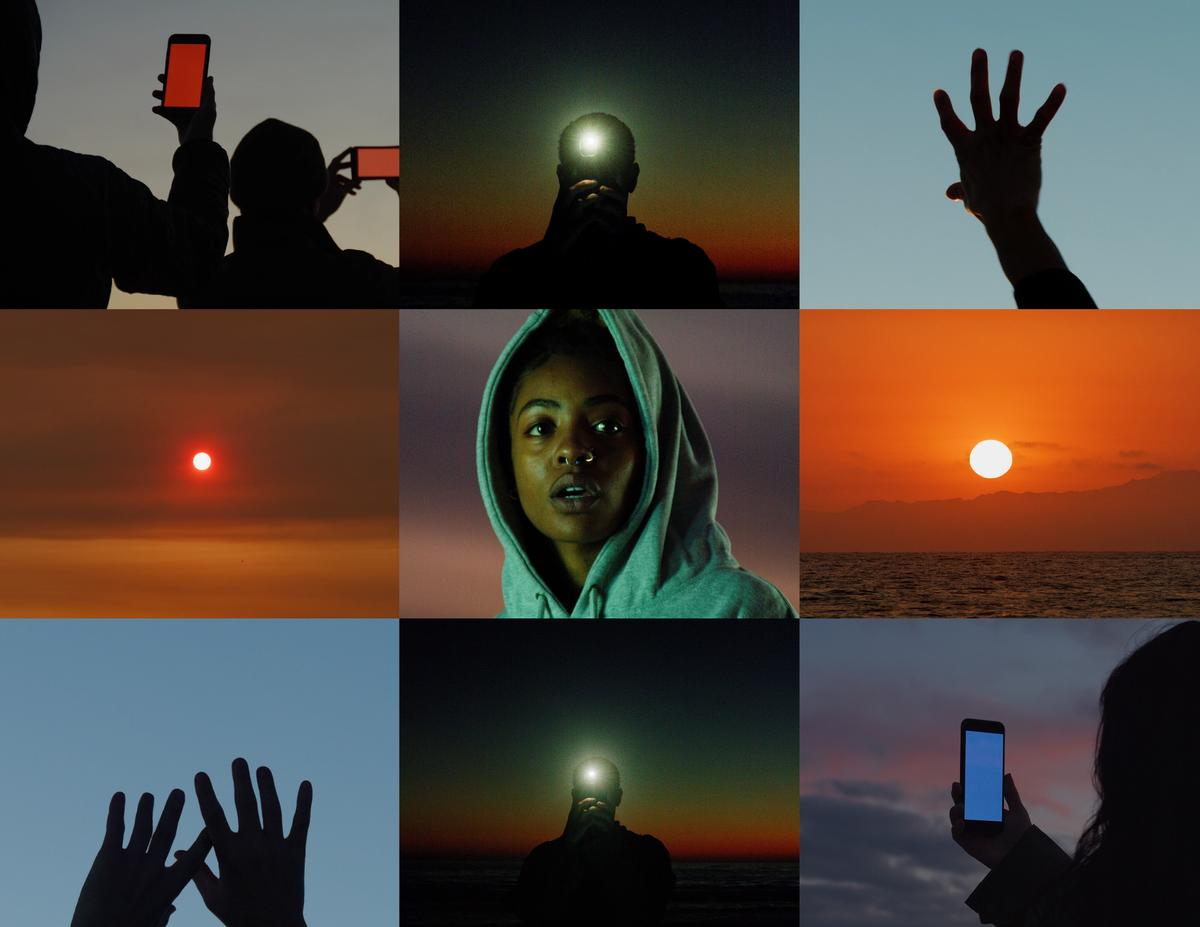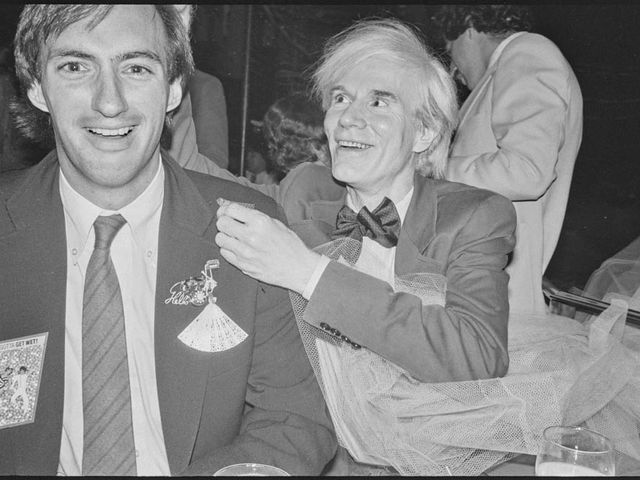Wilderness, Doug Aitken’s new show at 303 Gallery (27 April-27 May), is a 360-degree video installation that fully surrounds its audience. Cinematic scenes depict the poetic cycle of a day on the beach, from sunrise to sunset, as subjects look out to the ocean’s horizon. They sing simple phrases, like a meditation on life, asking “Did you see the sunrise?”. As beachgoers move throughout the day, documenting the world with phones in hand, their voices slowly transform, with cyclical repetition, into layered tones reminiscent of minimalist composers Philip Glass and Steve Reich, the latter of whom Aitken cites as an inspiration. Melodies break apart and tension builds as the warm glow of the setting sun is overtaken by the blue light of screens at dusk.
“By screenlight things become more detached. They go from a natural space to something that’s more asymmetric, patterned and that patterning speeds up—it’s going to move forward with or without you”, Aitken says. After falling into a dystopian darkness, the pace of the film quickens. The emotional score of voices-turned-soundscapes culminates in a surreal vibration. This aural phenomenon is by design. Aitken's chorus of collaborators is not real, biologically speaking. They are synthetic vocalists generated by artificial intelligence (AI).
The ever-growing presence of new technology in our lives has continued to evolve in its ability to execute functions typically reserved for human expression. The prevalence of biometric data collection, which entered the user-friendly mainstream with the introduction of Apple’s Touch ID in 2013, has since furthered studies on artificial emotional intelligence as it has expanded to include facial recognition technology, eye tracking and speech pattern mapping with the goal of both mimicking and responding to human emotional cues.
Major museums, including New York’s Metropolitan Museum of Art and the Museum of Modern Art, now utilise AI to curate, catalogue and enhance how their audiences interact with artworks, and AI-generative NFTs (non-fungible tokens) are a growing trend within the market. In March of 2022, when Netflix released The Andy Warhol Diaries, it began with a disclaimer to clarify that Warhol’s voice would be generated by AI throughout the series. This marked the first time an entire series on a major platform would be carried by AI “talent”. While AI has been used by many artists to access image-generating algorithms, the use of AI-generated human voices in a work of fine art is relatively uncharted territory.
No stranger to innovation, Aitken is known for pushing boundaries with his multimedia, genre-bending installations. Previous works have seen him moor sculptures to the ocean floor and integrate performance into kinetic light sculptures by way of a train traveling cross-country. Wilderness presents a special case scenario in ingenuity however, having been created over the course of the pandemic.
“This was a strange moment in human history we were living through,” Aitken says. “Everyone was having a different realization of what their reality is. I didn’t want to be defeated by it, but use it as a creative tool to make something new.” In doing so, Aitken composed an accurate portrayal of society at “land’s end”, as he calls it, with a new, virtual world on the horizon.
Advancements in AI move at warp speed and to predict the future of its capabilities requires a mixture of science and sociology, but when asked about the evolution of AI in the art world, Aitken says “we have to stay true to our vision and recognize these are tools. We have to be cognisant of letting them seep into how we perceive things. It takes vigilance sometimes. We are in a strange transitional space”.
As his film closes and the gallery is left silent, beyond the screens stand three sculptures of generative, glowing payphones. In stark juxtaposition to Wilderness, they confirm just how far we have traveled into the virtual realm.
- Doug Aitken: Wilderness, 27 April-27 May, 303 Gallery, New York.



